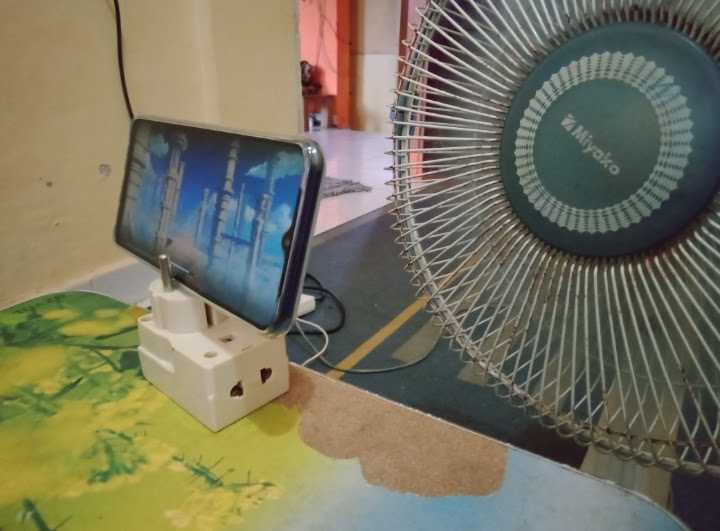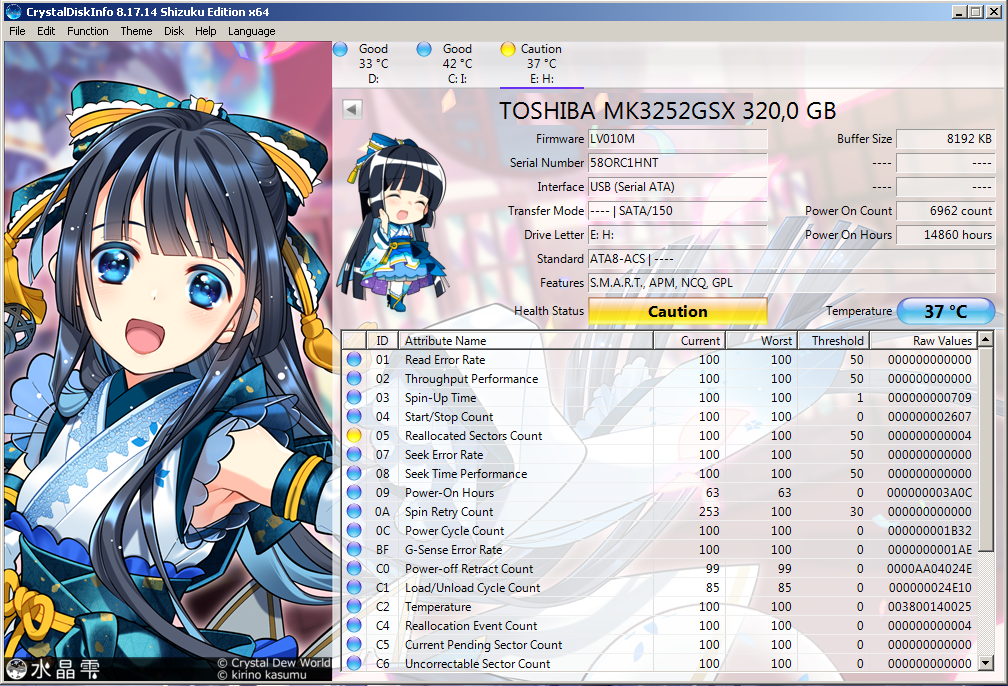Comparing: TOSHIBA MK3252GSX vs OPPO A15s eMMC 5.1
In this comparison, we analyze two Disks: TOSHIBA MK3252GSX and OPPO A15s eMMC 5.1, using synthetic benchmark tests to evaluate their overall performance. This side-by-side comparison helps users understand which hardware delivers better value, speed, and efficiency based on standardized testing. Whether you're building a new system or upgrading an existing one, this benchmark-driven evaluation offers valuable insights to guide your decision.

TOSHIBA MK3252GSX
| Type: | Disks |
|---|---|
| Model: | TOSHIBA MK3252GSX |
| Capacity: | 320GB |
| Interface: | SATA-II 3Gbps |

OPPO A15s eMMC 5.1
| Type: | Disks |
|---|---|
| Model: | OPPO A15s eMMC 5.1 |
| Capacity: | 64GB |
| Interface: | eMMC |
Specification Comparison Table
This specification comparison presents technical details of several devices or components to help you understand the key differences between each option. Use this table as a reference to determine which device best suits your needs.
| Specification | TOSHIBA MK3252GSX | OPPO A15s eMMC 5.1 |
|---|---|---|
| Brand | TOSHIBA | - |
| Format | HDD 2.5 | eMMC 5.1 |
| Capacity | 320GB | 64GB |
| Interface | SATA-II 3Gbps | eMMC |
Submission Comparison Table
This submission comparison table displays the number and details of benchmark data submissions from various devices or components. This information helps you understand the performance based on the benchmarks that have been tested, as well as providing an overview of the consistency and popularity of the available benchmark results.
Submission Comparison Chart
This chart visualizes the benchmark scores comparison between two hardware devices based on submitted data.
Media Gallery
A collection of photos of tested hardware. These images can help you identify the physical form, model, and variant of the hardware in question. These photos are from our own documentation, and if they are not available we may not be able to document them.
About Hardware TOSHIBA MK3252GSX
The TOSHIBA MK3252GSX is a chunky 2.5-inch hard disk with a 320GB capacity, specifically designed for use in laptops and other mobile devices. Using a SATA II (3.0 Gbps) interface and operating at a rotational speed of 5400 RPM, this HDD offers a balance between power efficiency and basic performance, making it an ideal solution for everyday use.
Equipped with 8MB of buffer cache, the drive is capable enough to handle common storage needs such as operating system files, work documents, music collections, and medium-resolution videos. Although it cannot match the speed of a solid-state drive (SSD), the TOSHIBA MK3252GSX remains an affordable alternative for users who prioritize storage capacity at a more economical price.
Physically, this hard disk generally uses two platters and four heads to read and write data, a standard configuration for a 320GB HDD. In synthetic testing, the read and sequential speed was 41.22 MB/s and the write speed was 38.74 MB/s, depending on system conditions and data fragmentation.
Despite the growing popularity of SSDs, the TOSHIBA MK3252GSX remains relevant as a backup storage solution or as a cost-effective upgrade for older laptops that still rely on mechanical storage media. Its ample capacity and power efficiency make it suitable for use in educational systems, netbooks or home computers with light to medium storage requirements.
Device Test:
Device: HP 1000 1b05au (HDD Caddy), IdeaPad Slim 3i 14ITL6 (HDD Enclosure)
Specs: E1-1200, 4GB RAM, SATA-II, Win7 | i5-1135G7, 12GB RAM, USB 3.0
Tuesday, 03 November 2020 12:43:42 | Update: 1 month ago
About Hardware OPPO A15s eMMC 5.1
OPPO A15s eMMC 5.1 is the eMMC (embedded MultiMediaCard) version 5.1-based internal storage chip used in the OPPO A15s smartphone. The eMMC 5.1 technology is a significant upgrade from the previous generation, delivering faster read/write speeds, better power efficiency, and improved performance in data input/output management. While not as fast as the more modern UFS (Universal Flash Storage) technology, eMMC 5.1 remains a reliable storage standard for entry-level to mid-range smartphones.
This storage is designed to provide a seamless user experience, from opening apps, saving files, recording videos, to managing Android system data. It also plays an important role in operating system stability, lightweight multitasking, and response time when the device starts up or switches between apps.
The tests were conducted on an OPPO A15s device with MediaTek Helio P35 (MT6765) specifications, 4GB RAM, and 64GB internal storage, running on Android 10 operating system with ColorOS 7.2 interface. The test was conducted when the device had been in use for approximately two years, so the performance results may be slightly affected by NAND Flash performance degradation over time (wear leveling).
In a benchmark using the Cross Platform Disk Test (Mobile), the eMMC 5.1 on the OPPO A15s recorded a read speed of 145.27 MB/s and a write speed of 50.09 MB/s. This indicates that the storage performance is still solid enough for daily needs such as opening social media, streaming videos, accessing galleries, and saving files from third-party applications.
Overall, the eMMC 5.1 on the OPPO A15s is a well-balanced internal storage solution between price, efficiency, and performance, perfect for users who need a smartphone with responsive capabilities while remaining power efficient. For casual users, this performance is more than enough to run most popular Android apps without a hitch.
Device test (testbed):
Device: OPPO A15s
CPU: MediaTek MT6765 Helio P35
RAM: 4GB
Storage: 64GB
OS: Android 10, ColorOS 7.2
* This hardware test was conducted after the device was approximately 2 years old, there may be some performance degradation.
Tuesday, 06 April 2021 13:51:49 | Update: 1 month ago

